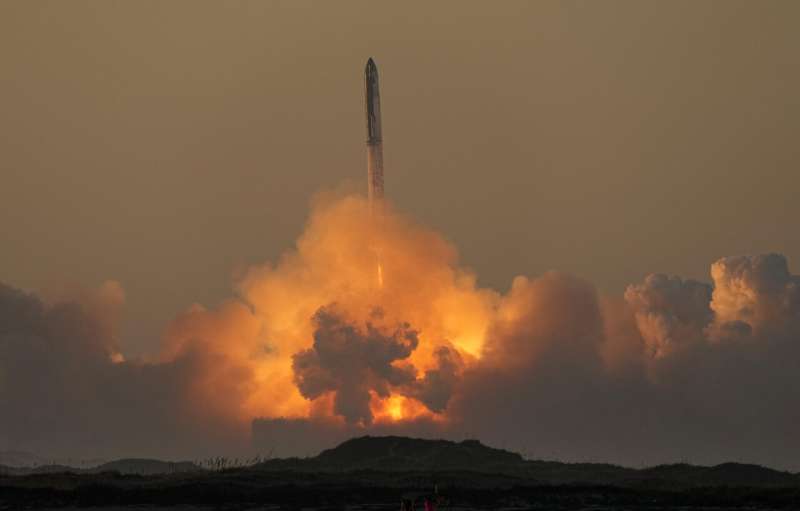Explosions Bring Second Test Flight of SpaceX's Giant New Rocket to an End

November 18, 2023
The substance of this article has been examined in accordance with Science X's editorial process and policies. The editorial board has emphasized the following criteria while verifying the reliability of the content:
- Fact checked
- Sourced from a reputable news agency
- Proofread
by Marcia Dunn
SpaceX's grand rocket Starship was launched but unfortunately, both the booster and the spacecraft were lost due to two explosions that happened minutes into the test flight on Saturday.
Following its successful ascent from South Texas, the rocketship reached space before the sudden loss of communication. It appears that the self-destruction system on the ship triggered an explosion over the Gulf of Mexico, as per SpaceX officials.
The flight was terminated when the ship's engines were close to completing their firing cycle to redirect it for a global route. An explosion also ended the first trial flight in April.
On the same Saturday, the booster that had separated approximately three minutes into the flight, also met with an explosion over the gulf. However, its job had already been completed by then.
Notwithstanding the setback, the flight, which lasted close to eight minutes, was double the duration of the April test. Standing almost 400 feet (121 meters) tall, Starship, destined to transport people to the moon and Mars, is the most significant and strongest rocket ever constructed.
'The actual icing on the cake today, that successful takeoff,' SpaceX commentator John Insprucker observed.
Kate Tice, another commentator added: 'We collected a wealth of data, which will aid us in enhancing our next flight.'
Elon Musk, the founder of SpaceX, monitored the launch from behind the controllers at the southernmost point of Texas, near the Mexico border and Boca Chica Beach. Meanwhile, the employees at the company headquarters in Hawthorne, California, cheered as the Starship launched at daybreak. The booster also crashed into the gulf, inducing silence in the room when it became clear the spaceship had been destroyed and fallen into the gulf.
Starship, for the flight, aimed at reaching an altitude of 150 miles (240 kilometers), just enough to enable the bullet-shaped spacecraft travel globally before making a descent into the Pacific near Hawaii about 1 1/2 hours after the take-off, falling short of a full orbit.
Post the flight demonstration in April, SpaceX made numerous enhancements to the booster, its 33 engines, and the launch pad. The Federal Aviation Administration gave a clearance to the rocket for flight after affirming that all safety and environmental requirements had been fulfilled.
© 2023 The Associated Press. All rights reserved. Redistribution, republication, or broadcast of this content is prohibited without seeking prior permission.




